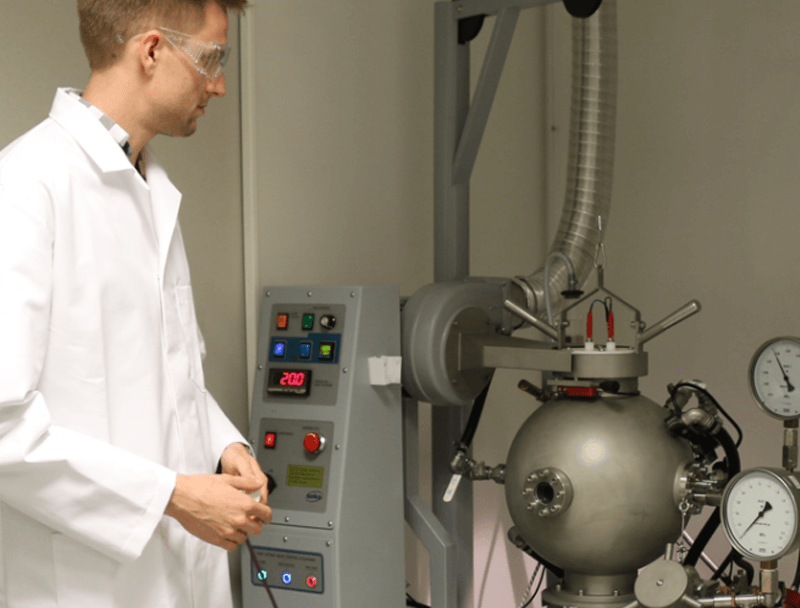Dust and Powder Flammability Testing
BS EN 14034 parts 1 & 2 / ASTM E1226
The explosion severity test is conducted to determine maximum pressure (Pmax), Maximum rate of pressure rise ((dP/dt)max) and Kst of an ignited powder, dispersed in air, as a dust cloud.
Working through a range of powder concentrations, the powder is dispersed into a 20L explosion vessel (sphere) using, dry compressed air. These suspended dust clouds are then exposed to a large 10 kJ chemical ignition source and any ignition and following explosion is monitored, measured and recorded. Testing over a wide range of powder concentrations enables a flammability curve to be generated, along with peak values.

Data generated by the explosion severity test is predominantly used for either design of explosion protection systems (venting, containment or suppression) or to confirm a material is appropriate for processes with an established explosion protection system.

Dust Combustibility (Group A/B)
Read More
Minimum Ignition Energy (MIE)
Read More
Minimum Ignition Temperature (MIT)
Read More
Layer Ignition Temperature (LIT)
Read More
Minimum Explosive Concentration (MEC)
Read More
Burning Behaviour
Read More© 2024 Sigma-HSE (India) Pvt Ltd | Registered in India No. U93000DL2014PTC266010 | Designed By WebClixs